Database Queries: Analyzing Customer and Invoice Data
VerifiedAdded on 2020/04/07
|6
|460
|212
Homework Assignment
AI Summary
This assignment presents a series of SQL queries designed to analyze relationships between customer, invoice, and product data. The solutions cover a range of database operations, including calculating invoice totals, identifying customers based on balance, and finding products sold. Queries utilize JOIN operations to combine data from multiple tables, such as customer, invoice, line, and product, to extract specific information. Examples include finding customers with balances within a specified range, identifying customers with invoices, and determining the number of invoices per customer. The assignment demonstrates how to use aggregate functions like SUM and COUNT, along with GROUP BY and HAVING clauses, to perform complex data analysis and reporting. It includes queries to retrieve customer names, vendor details, and product information based on various criteria, such as invoice totals, product codes, and units sold, offering a comprehensive guide to database querying techniques.
1 out of 6
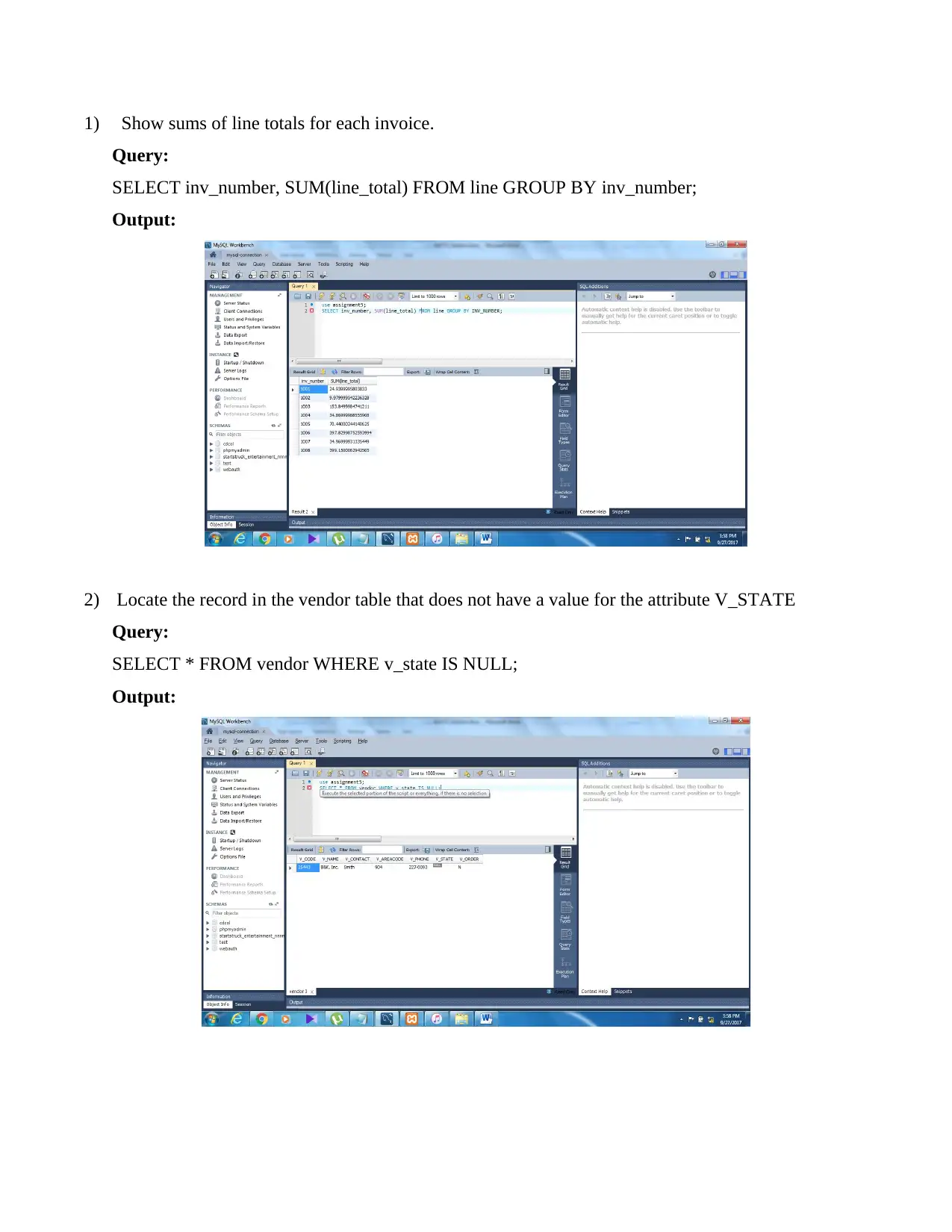
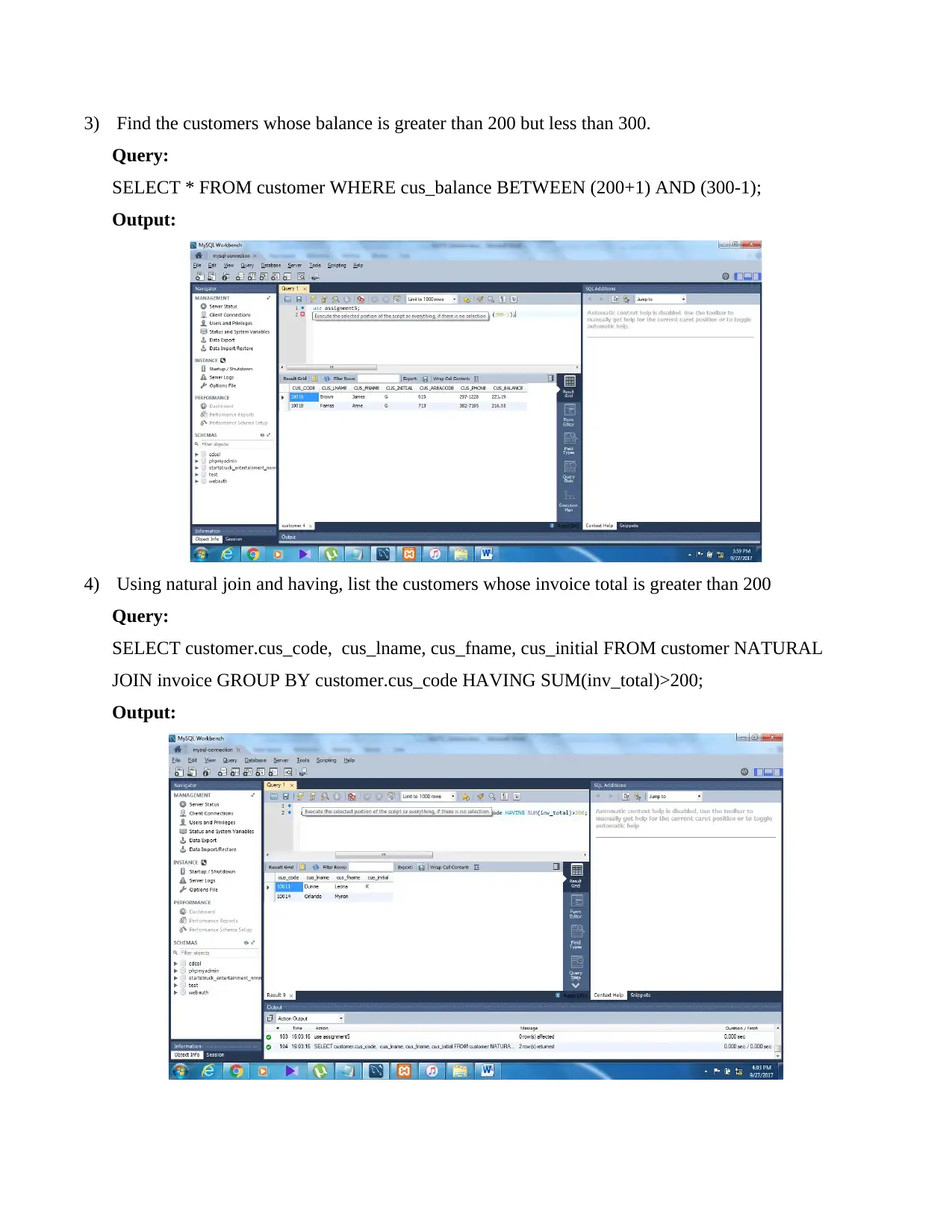
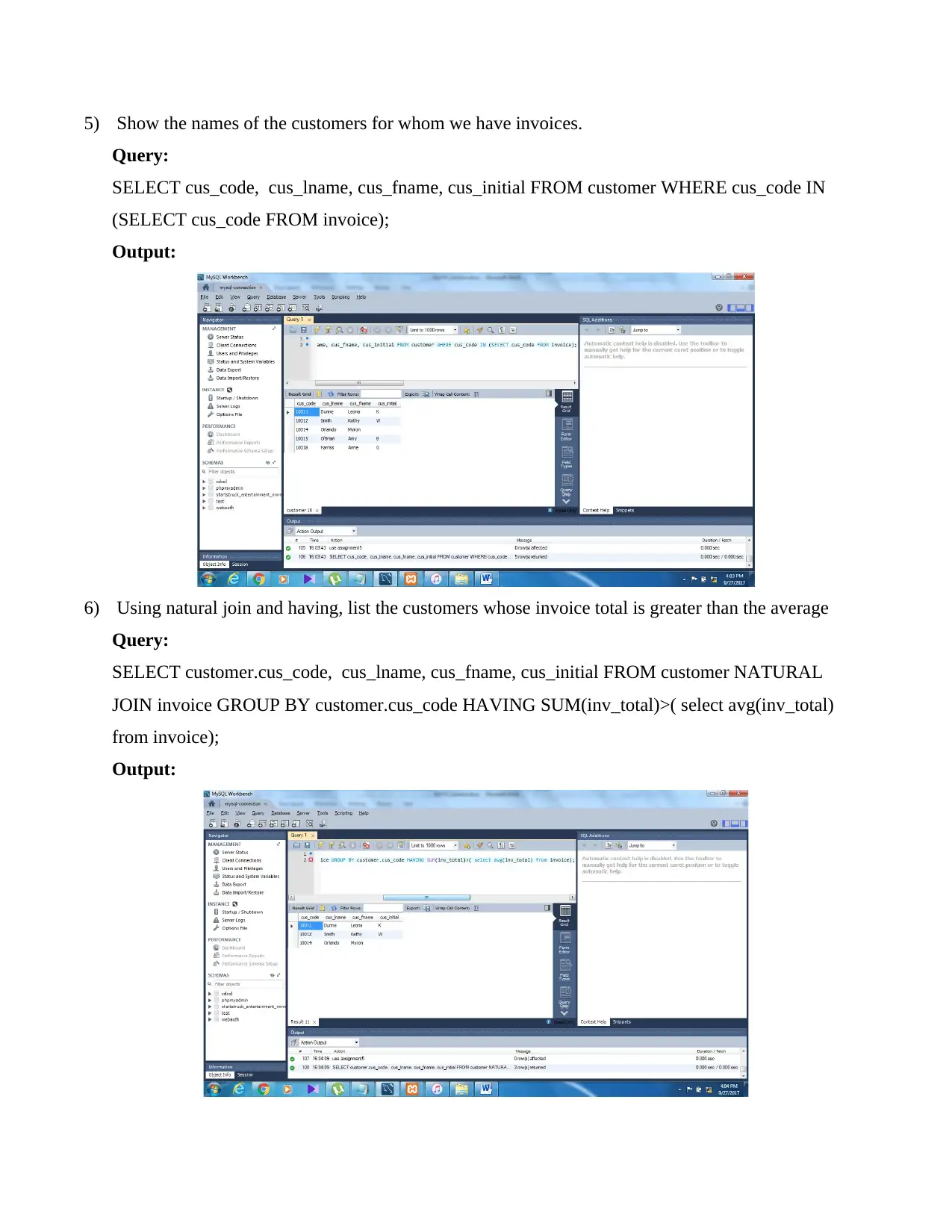

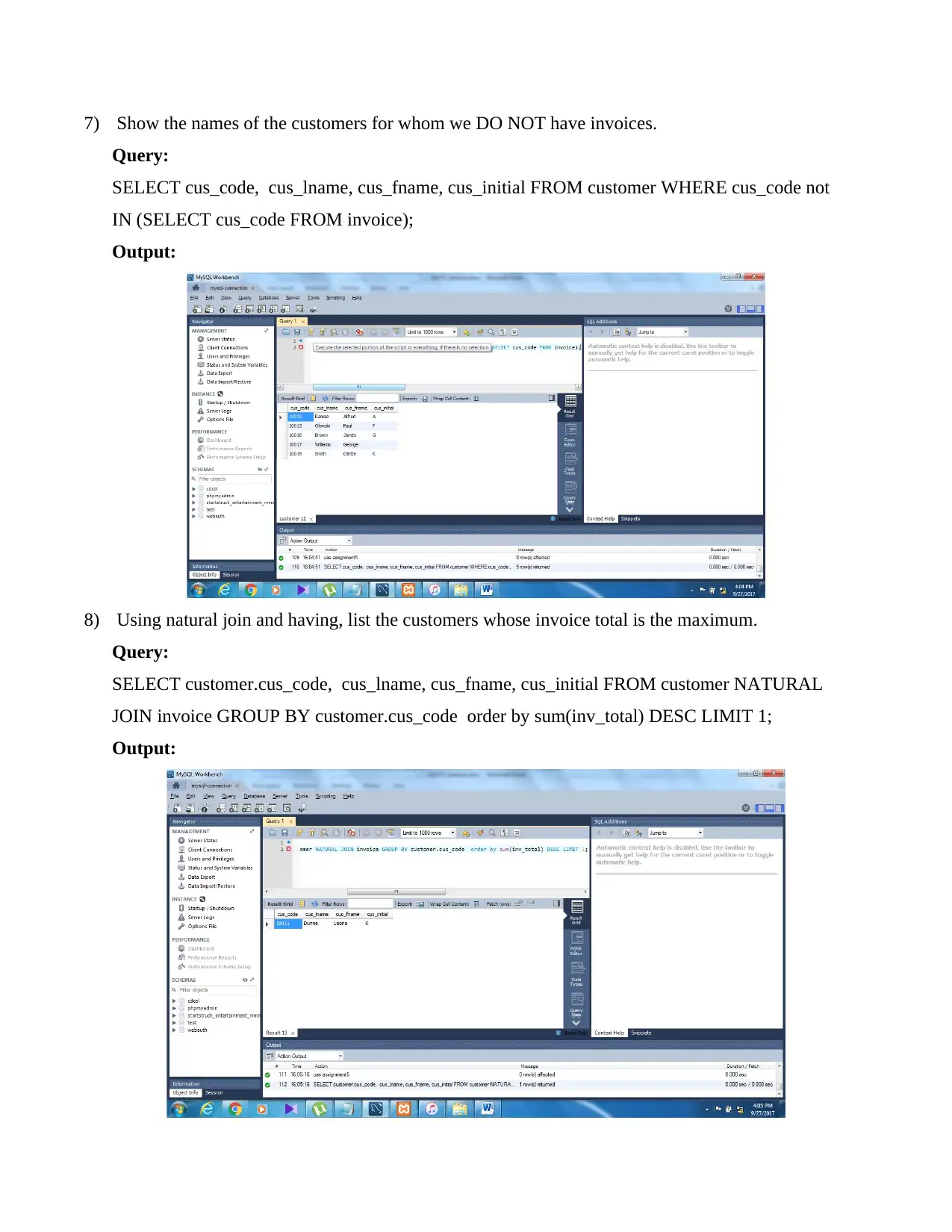
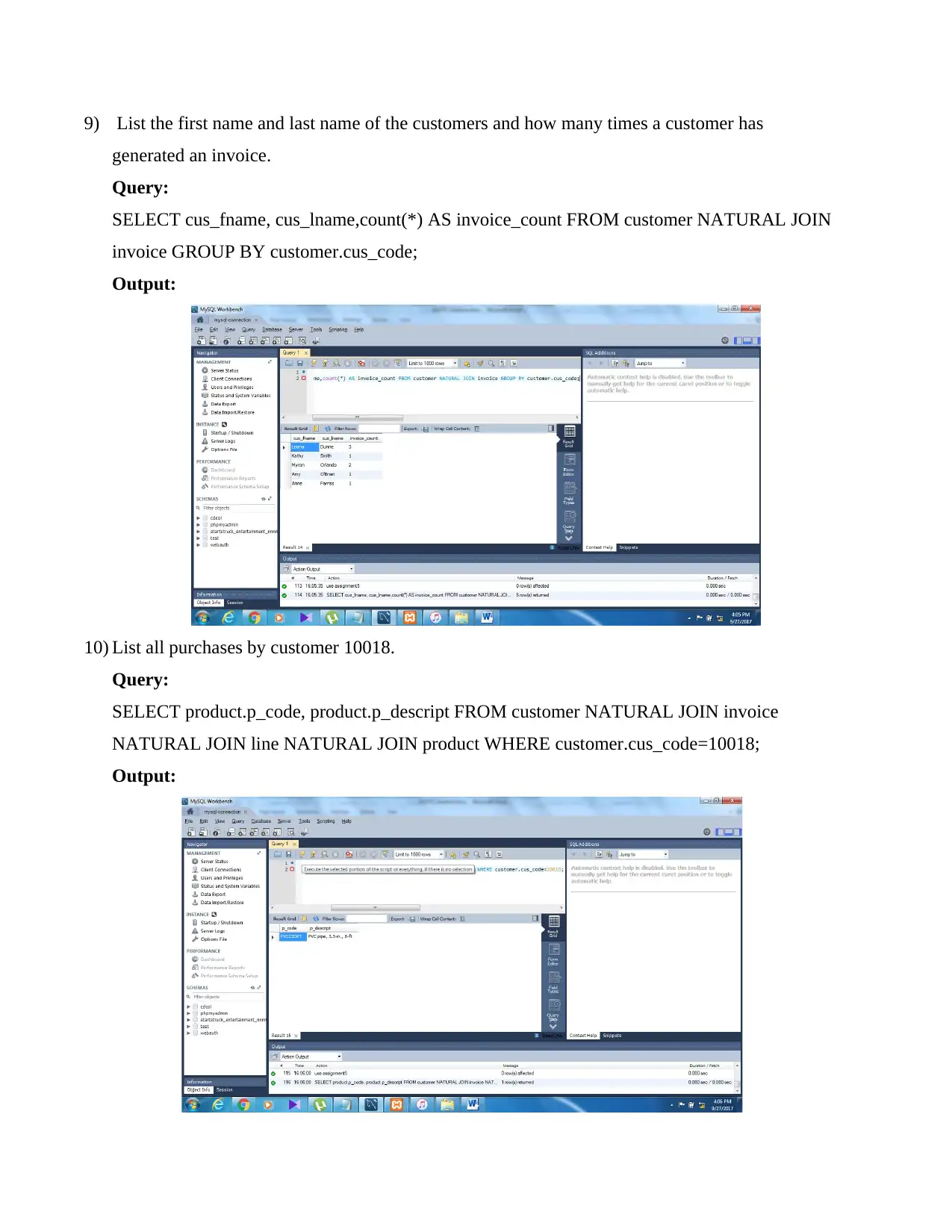
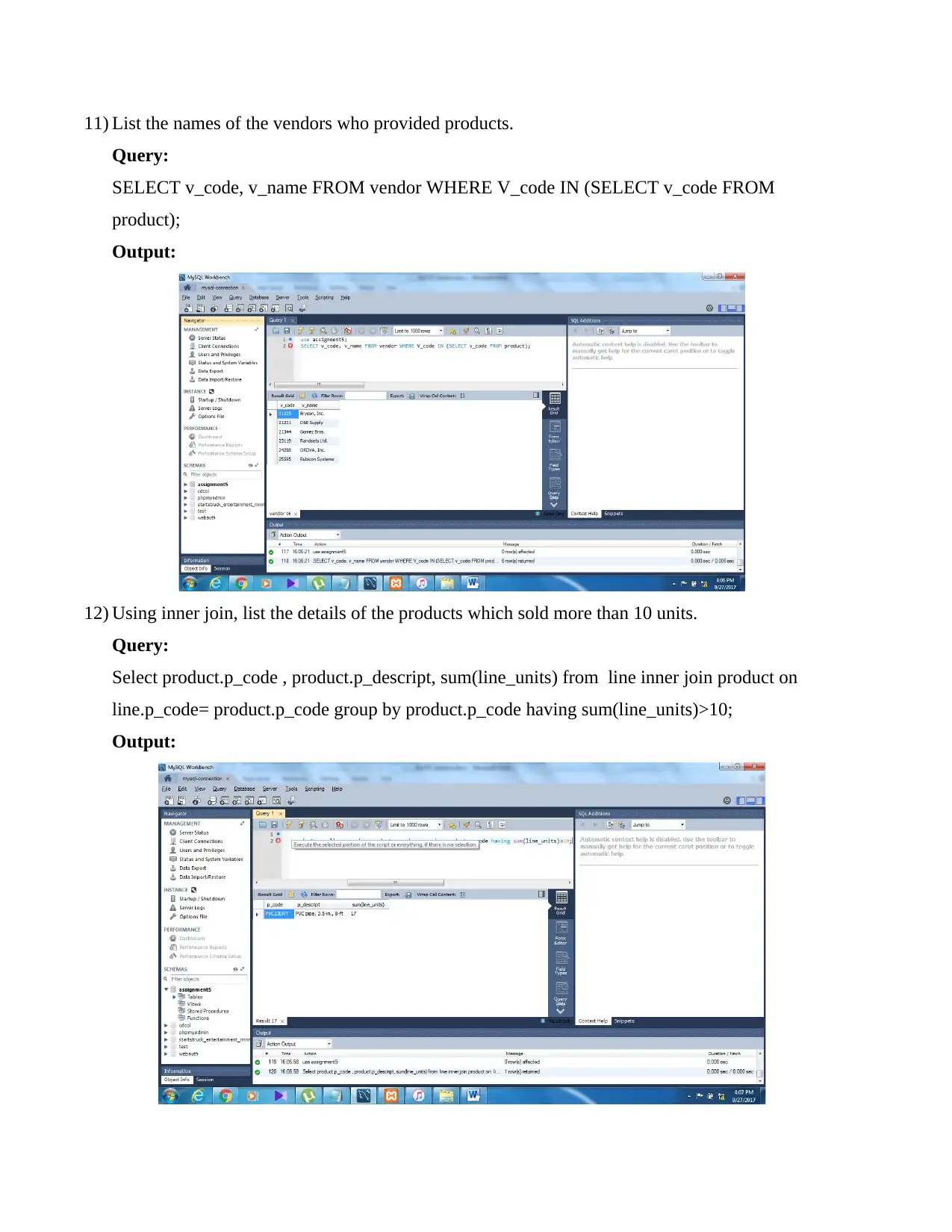






![[object Object]](/_next/static/media/star-bottom.7253800d.svg)